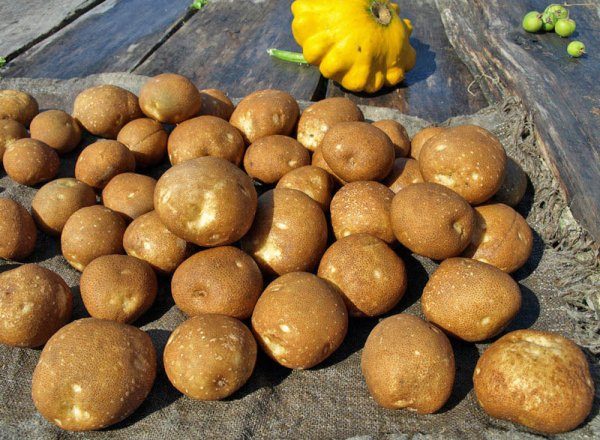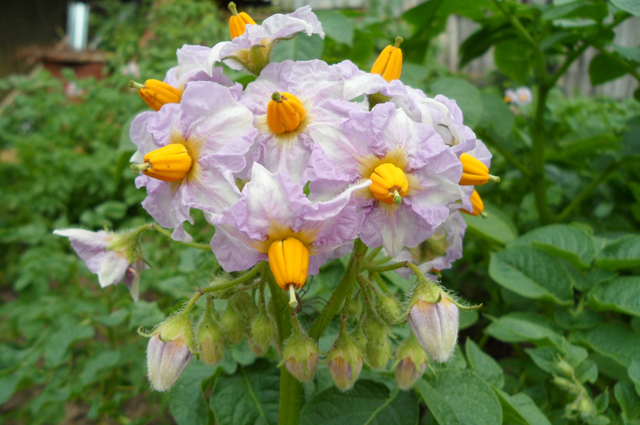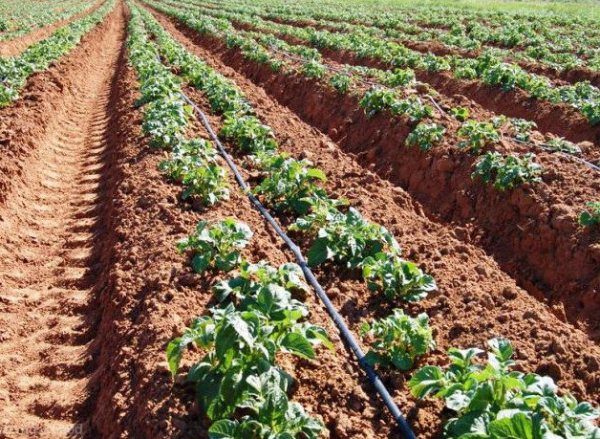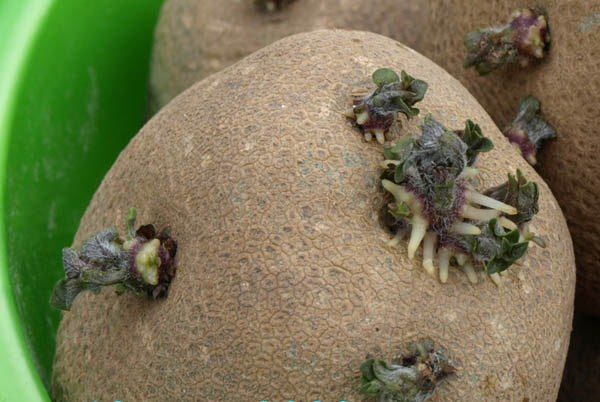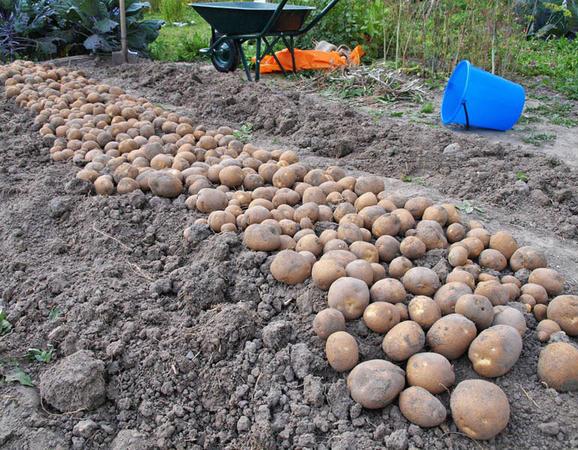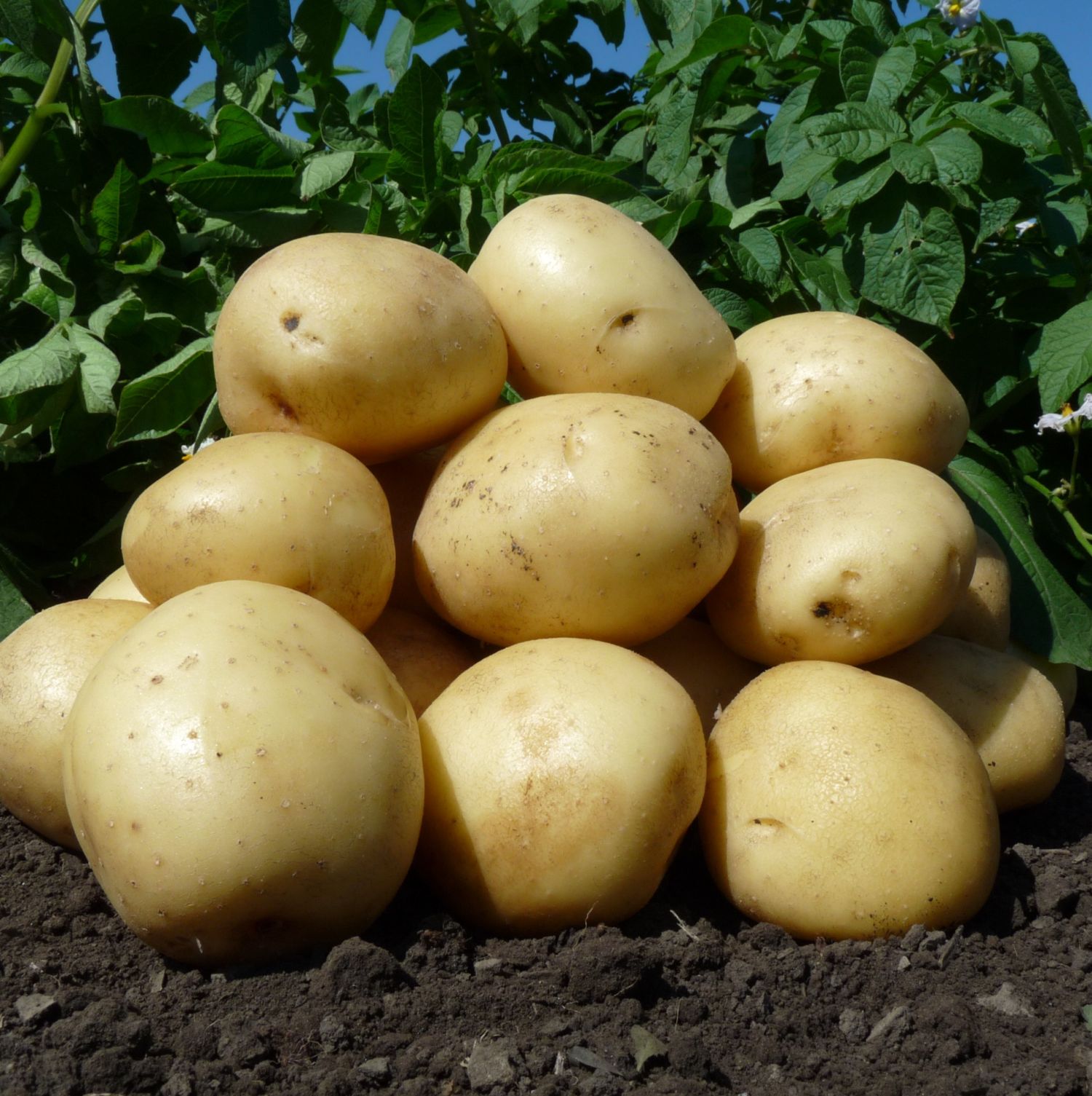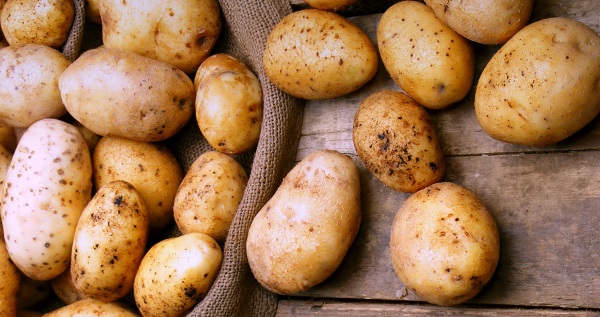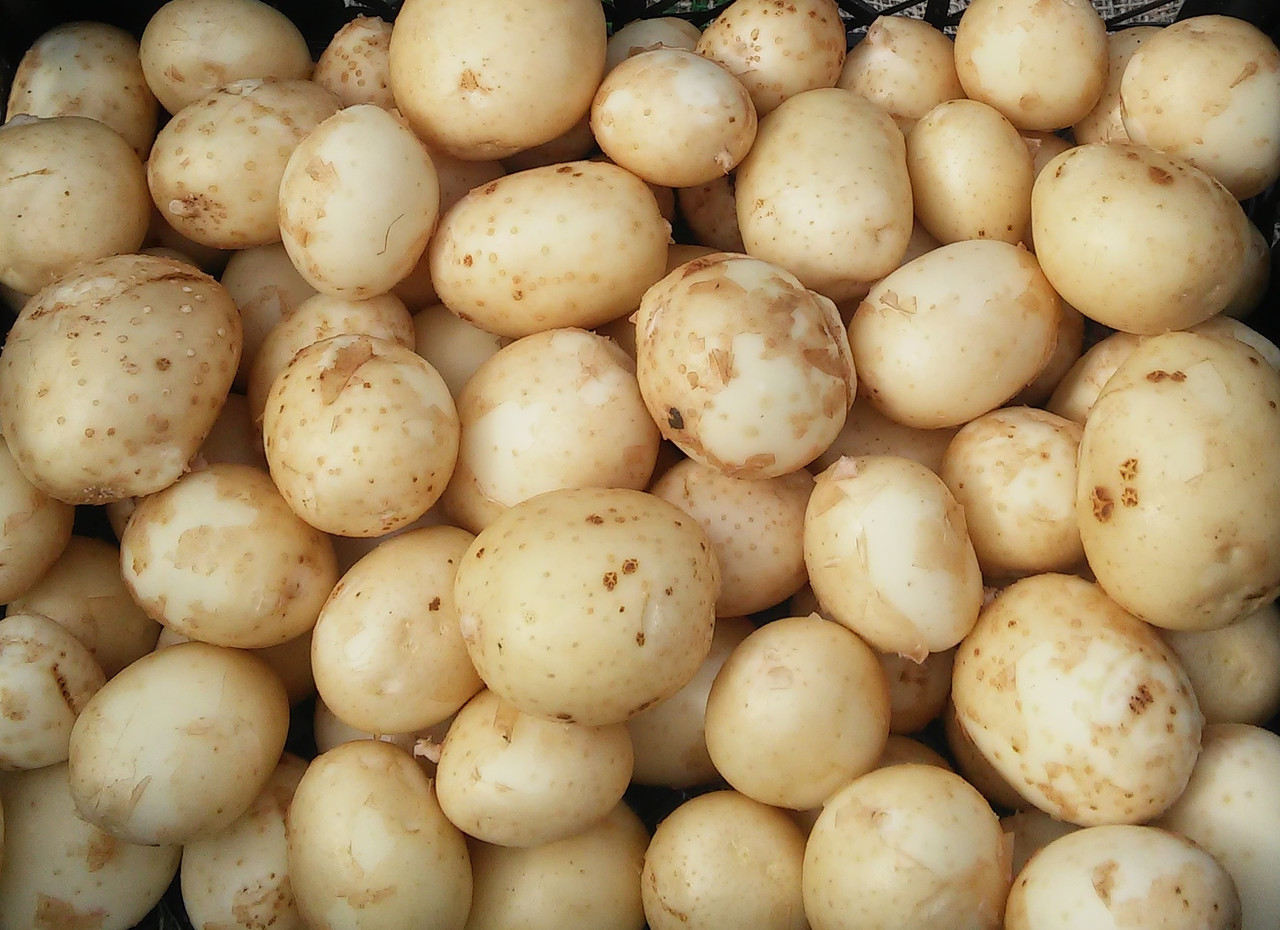Content:
Kiwi potatoes have a completely unusual fruit shape and a net-like skin. This variety is little known because it is not sold in the market or in supermarkets. But still, this potato is appreciated by people engaged in agronomy, since this plant does not require special care, while it bears fruit well.
The history of the creation of the Kiwi variety
Many summer residents and gardeners who are familiar with this variety believe that his homeland is Belarus, and he appeared along with such varieties as:
- Lasunka;
- Pace;
- Belarusian-3.
But this is a significant mistake, since all these varieties have absolutely nothing to do with each other. In addition, gardeners argue among themselves whether this type of potato is a genetically modified organism, or whether this product is still safe to eat. All these rumors are spreading due to the fact that this plant is resistant to being eaten by a pest. People speculate that this can only be explained by the introduction of genetic innovations that destroy beetles. This is wrong again.
This is explained by the fact that the beetle does not like the organic protein that is part of the biocell, which got there due to the crossing of plants. In addition, beetles cannot lay eggs on fleecy sheets, this is another reason why pests bypass Kiwi potatoes. The hairy surface of the fruit rind is also the result of conventional crossing and selection. Nobody interfered with the gene structure of the potato.
This variety is grown almost throughout Russia, in addition, it can be seen in Ukraine, Lithuania, Kazakhstan and Belarus.
Potatoes Kiwi variety: variety description
The potato variety Kiwi is distinguished by good fruiting. The variety is late maturing as it fully ripens after 120 days after being planted. The growth and development is significantly influenced by the weather, which stands for the growing season and plant development. Therefore, the ripening period in one part of the country may differ from the ripening period in another.
The potato bush grows 80 centimeters high. Moreover, its stems are straight and have many branches. The leaves of the bush are rough, have hairiness and pointed edges. The color of the leaves is dark green. The potato blooms in a light lilac color. The parameter of the tubers is distinguished by an unusually elongated shape with rounded edges, which makes the potato very reminiscent of an exotic fruit, from which the variety got its name. The peel is as if covered with a mesh, while it is rough to the touch. The pulp has a high density and therefore requires a long time during heat treatment. On the cut, the pulp is white with a slight yellowness.
The main feature of the variety is that the tubers have the same parameters under any conditions. They are either large or medium in size. In cooking, Kiwi potatoes are used for mashed potatoes due to their crumbness, although they are boiled longer than usual. The middle of the vegetable has absolutely no flavor, but it can be used for salads.
This potato variety is perfectly preserved, while it does not lose its quality when it is kept in a cool room for a long time.
The Kiwi potato variety is very rare, for this reason its planting material is expensive. You can buy a kilogram of potatoes for one hundred rubles.
Planting Kiwi Potatoes
It is best to start planting Kiwi potatoes from the end of April. It was at this time that the soil warms up to a temperature of +9 degrees, while there is practically no frost. The holes must be at least 10 centimeters deep.
The area on which the planting will be carried out should be illuminated from all directions by the sun's rays. The most optimal for the development of this plant is sandy loam soil. It is necessary to prepare it in the fall.
Already in September, the soil is plowed to a depth of 18 centimeters. After that, manure and fertilizers containing phosphorus and potassium are laid. These fertilizers will help to improve the taste characteristics of the potatoes. In order for the tubers to be rich and aromatic, nitrogen fertilizers can be applied. They are brought in during the preparation of the soil in the fall, and in the spring, after planting.
Immediately before planting, the soil must be rid of weeds and re-plowed. Planting Kiwi potatoes has its own peculiarity.
It is best planted using the Dutch method:
- two rows are planted together, then an interval of 70 centimeters and again two rows;
- tubers are planted at a distance of at least 30 centimeters;
- when planting, the tubers are not spud, they are only covered from both sides, and thus a row is obtained.
If you follow all the rules and technology of agronomy when planting potatoes, then you can take at least two kilograms of tubers from one bush. The degree of maturity of the tubers can be determined by the state of the bush, as well as if you dig one for clarity. In addition, potatoes are massively dug up at the end of September and throughout October.
Agronomist tips
Agronomists advise Kiwi potatoes for cultivation in summer cottages, since they are completely undemanding to care for, and at the same time they yield an excellent harvest.
But still, there are nuances that you need to pay attention to:
- Varietal Kiwi potatoes grow well on any type of soil, but prefers a sandy loam look best;
- For planting, it is better to choose the area where they were grown before:
- zucchini;
- cucumbers;
- squash;
- cabbage;
- legumes;
- table beet;
- pumpkin;
- salad.
- You can not plant potatoes in the vicinity of crops such as:
- tomatoes;
- strawberries;
- pepper;
- eggplant.
These crops are affected by similar diseases and pests.
- Soil preparation is carried out in the fall. For this, the soil is dug up, introducing manure and organic fertilizers into it;
- Before planting, the soil is re-dug up and at the same time cleared of weeds;
- The Kiwi variety cannot be grown from seeds. For planting, it is imperative to germinate the tubers;
- Potatoes are planted to a depth of 10 centimeters, but if the soil is clayey, then it will be enough to plant the tubers to a depth of 6 or 8 centimeters;
- Watering Kiwi is recommended three times per season. In this case, the water must be poured out so that the soil is soaked half a meter in depth;
- The plant is fed the same way, three times a year. In this case, the first feeding is done during the period of final warming, and the rest should be done every 10 days. But when applying fertilizers, it must be remembered that a large dose of drugs should not be given;
- The Kiwi variety resists any diseases and is not attacked by pests, therefore it does not need preventive measures;
- Before harvesting, the tops must be cut, leaving small stems up to 15 centimeters in height;
- Harvesting begins in late September and October. In this case, the tubers must be thoroughly dried, cleaned of soil and sorted out in order to eliminate the damaged ones. Only then are they sent to a room designed for storing vegetables.
Kiwi resistance to disease
In addition, a potato pest such as the Colorado potato beetle or wireworm does not attack the shrub.The reason for this is the presence of bio-fiber in the composition of young leaves, which is a protection against both diseases and pests. Also, since the leaves of the plant are characterized by the presence of hairiness on the surface, this prevents insects from laying eggs on them.
Pros and cons of Kiwi potatoes
Kiwi potatoes have a number of benefits, which include:
- the possibility of landing in any kind of soil;
- not exactingness to special care methods;
- high productivity;
- resistance against diseases and pests;
- good presentation;
- excellent keeping quality and long shelf life.
The disadvantages include:
- high cost of planting material;
- lack of taste and aroma.
Regardless of the rumors that spread among gardeners about changing the structure of the potato by interfering with its genetics, Kiwi potatoes are preferred by most gardeners for their yield and good characteristics. When planting 1 kilogram of potatoes, 20 kilograms of ripe tubers are collected from the area. Thanks to these qualities, potatoes receive a lot of positive feedback from summer residents and gardeners who grow this variety in their own country.
